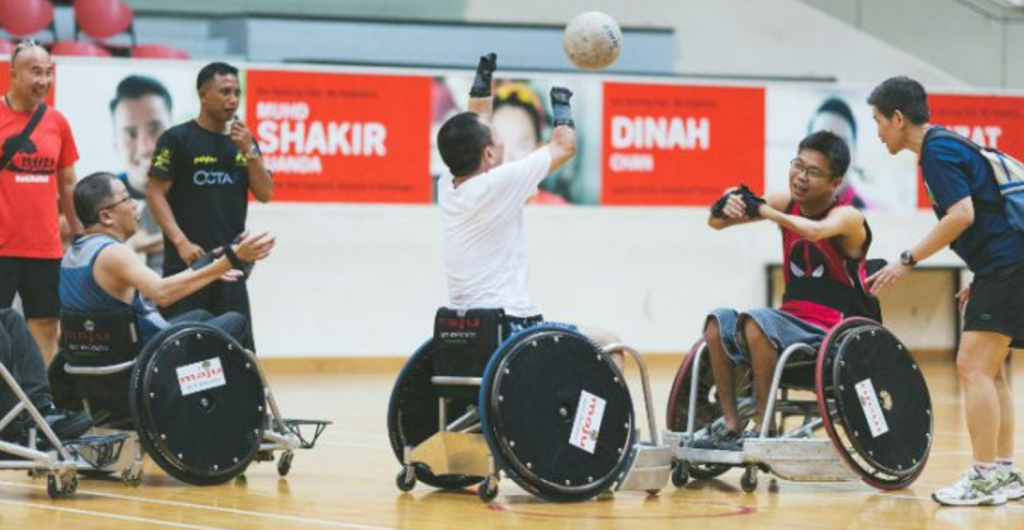
Originally known as Murderball due to its aggressive nature, Wheelchair Rugby made its Paralympic debut at Sydney 2000. Combining elements of rugby, basketball, and handball, this sport is one of the few in the world in which mixed teams compete.
The goal of the game is simple: carry the ball across the oppositions’ goal to score, whilst at least 2 wheels of their wheelchair are on the ground. Teams have 12 seconds to move the ball into the opponents’ half, and 40 seconds in total to score a goal, or possession of the ball will be given away. The player in possession of the ball must bounce or pass the ball within 10 seconds of receiving it. To pass the ball, players may throw, roll, bat or bounce the ball. Kicking is not permitted.
Wheelchair Rugby is played on a hardwood court measuring 28m by 15m. At either end, there is an 8m goal-line and is marked out by cones. Teams consist of 12 players, of which only 4 are allowed on the court at any given time during play. Games consist of four 8-minute quarters, and if the score is tied at the end of normal time, 3-minute overtime periods are played. This means that there will always be a winner who emerges out of the scuffle.
The players who practice Wheelchair Rugby often have impairments affecting their arms and legs, and they are classified using a points system which measures physical ability; each individual is scored 0.5 — 3.5. The lower the number, the greater the physical limitation. The four players on the court cannot exceed a total of eight points. However, for each female player on the court, an additional half point will be awarded.
The wheelchairs used in this sport are manual wheelchairs specifically designed for the sport. In fact, by observing players’ wheelchairs, spectators will be able to tell the role they play. Offensive wheelchairs are shorter, with small bumpers and rounded wings so that players can maneuver themselves in small spaces. On the other hand, defensive wheelchairs are longer and are equipped with a wide bumper designed to strike and hold onto opposing wheelchairs.
Wheelchair Rugby is a contact sport and is definitely not for the faint of heart. But, if you think you have the courage for it, what are you waiting for? Join us for training!
Wheelchair Rugby classification masterlist can be found below:
Physical Impairment (As of 9 Sept 2019) – HERE

